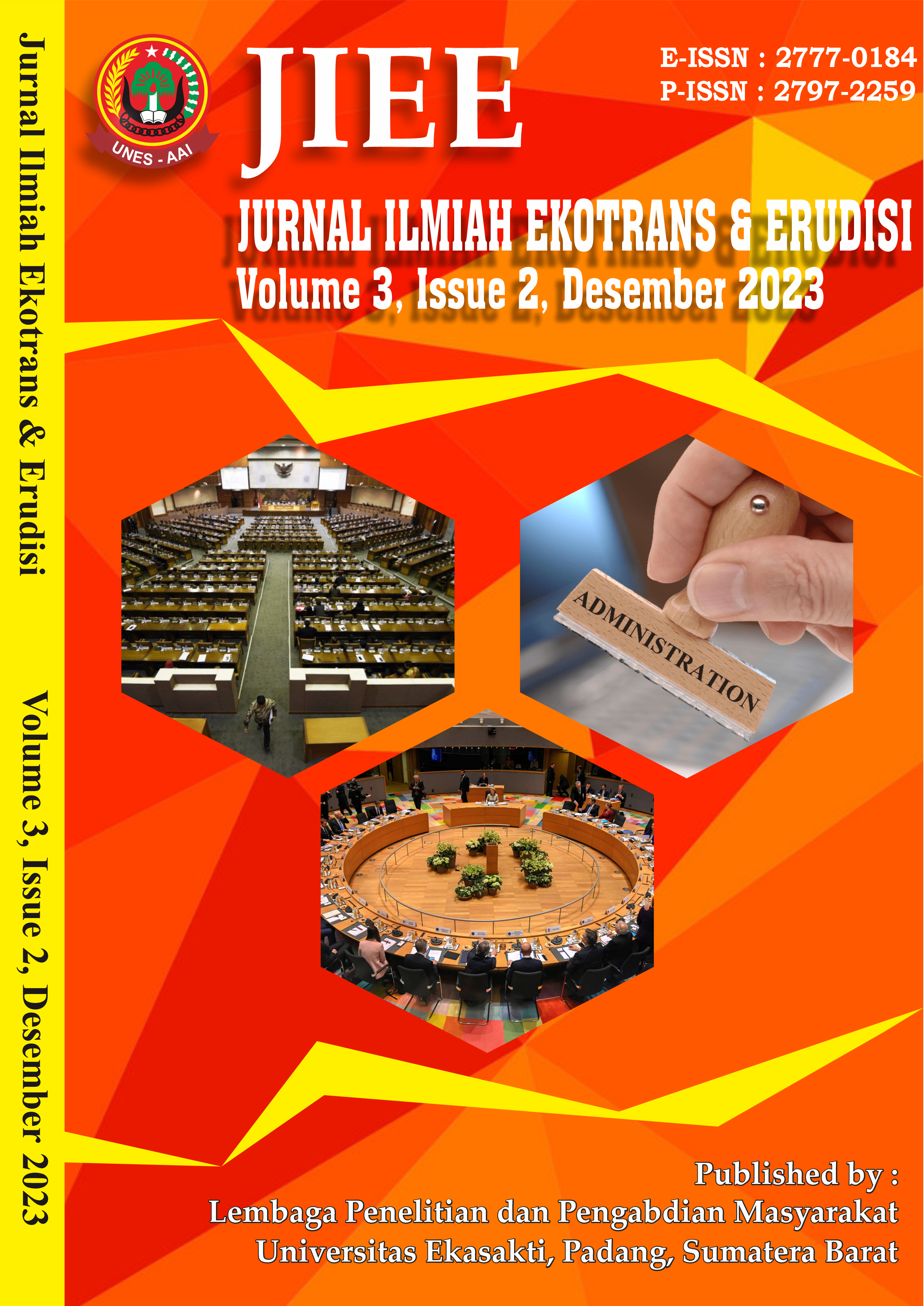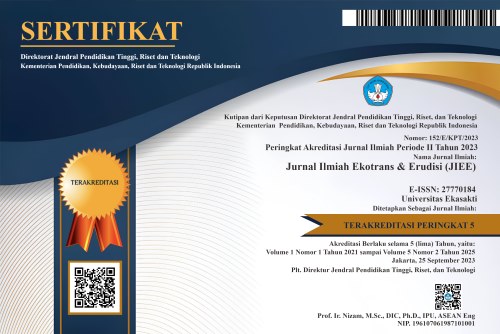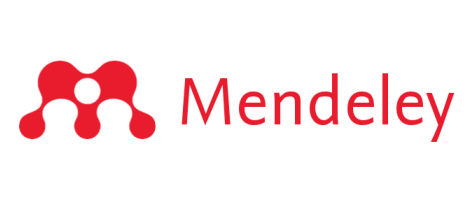Management of Fixed Asset Management at the Manpower and Transmigration Service of Penukal Abab Lematang Ilir Regency (PALI)
DOI:
https://doi.org/10.69989/wm79sx25Keywords:
Management, Assets, PALIAbstract
Assets are the component with the greatest value and wealth that is vital for the running of an organization, whether in a government or private company. Researchers will focus this research on the Manpower and Transmigration Service of PALI Regency and how fixed asset management works. whether the implementation of asset management is in accordance with established regulations. So far, management of regional inventory items has been carried out on the basis of the provisions of Minister of Home Affairs Regulation Number 7 of 1997 as the main regulations for regional government inventory regulations. The aim of this research is to understand how fixed asset management at the PALI Regency Manpower and Transmigration Service works. This research uses qualitative research methods with an emphasis on Doli D. Siregar's theory of asset indicators, namely: asset inventory, legal audit, asset assessment, asset optimization, and asset monitoring and control. In selecting informants, researchers used purposive. The techniques used by researchers in collecting data are interviews, observation, and documentation studies. The conclusion from the results of this research shows that fixed asset management at the Manpower and Transmigration Department is not running well. This is because there is still a lack of human resources in the field of asset management, one of whose tasks is to inventory assets, and the large number of assets makes asset managers overwhelmed.
Downloads
References
Abbott, K. W., Green, J. F., & Keohane, R. O. (2016). Organizational ecology and institutional change in global governance. International Organization, 70(2), 247–277. https://doi.org/10.1017/S0020818315000338
Aktas, N., Croci, E., & Petmezas, D. (2015). Is working capital management value-enhancing? Evidence from firm performance and investments. Journal of Corporate Finance, 30, 98–113. https://doi.org/10.1016/j.jcorpfin.2014.12.008
Alkhanak, E. N., Lee, S. P., & Khan, S. U. R. (2015). Cost-aware challenges for workflow scheduling approaches in cloud computing environments: Taxonomy and opportunities. Future Generation Computer Systems, 50, 3–21. https://doi.org/10.1016/j.future.2015.01.007
Almeida, N., Trindade, M., Komljenovic, D., & Finger, M. (2022). A conceptual construct on value for infrastructure asset management. Utilities Policy, 75, 101354. https://doi.org/https://doi.org/10.1016/j.jup.2022.101354
Balzer, G., & Schorn, C. (2016). Asset management for infrastructure systems. Springer.
Baumgartinger-Seiringer, S., Miörner, J., & Trippl, M. (2021). Towards a stage model of regional industrial path transformation. Industry and Innovation, 28(2), 160–181. https://doi.org/10.1080/13662716.2020.1789452
Bodnaruk, A., & Simonov, A. (2015). Do financial experts make better investment decisions? Journal of Financial Intermediation, 24(4), 514–536. https://doi.org/https://doi.org/10.1016/j.jfi.2014.09.001
Cerruti, C., & Neyens, R. (2016). Public asset management companies: a toolkit. World Bank Publications.
Christensen, T., Lægreid, P., & ... (2016). Organizing for crisis management: Building governance capacity and legitimacy. Public Administration …. https://doi.org/10.1111/puar.12558
Costin, A., Adibfar, A., Hu, H., & Chen, S. S. (2018). Building Information Modeling (BIM) for transportation infrastructure–Literature review, applications, challenges, and recommendations. Automation in Construction. https://doi.org/10.1016/j.autcon.2018.07.001
Cremers, M., Ferreira, M. A., Matos, P., & Starks, L. (2016). Indexing and active fund management: International evidence. Journal of Financial Economics, 120(3), 539–560. https://doi.org/https://doi.org/10.1016/j.jfineco.2016.02.008
Dumay, J. (2016). A critical reflection on the future of intellectual capital: from reporting to disclosure. Journal of Intellectual Capital, 17(1), 168–184. https://doi.org/10.1108/JIC-08-2015-0072
Helfat, C. E., & Peteraf, M. A. (2015). Managerial cognitive capabilities and the microfoundations of dynamic capabilities. Strategic Management Journal, 36(6), 831–850. https://doi.org/10.1002/smj.2247
Kaiser, M. G., El Arbi, F., & Ahlemann, F. (2015). Successful project portfolio management beyond project selection techniques: Understanding the role of structural alignment. International Journal of Project Management, 33(1), 126–139. https://doi.org/10.1016/j.ijproman.2014.03.002
Kato, M., & Charoenrat, T. (2018). Business continuity management of small and medium sized enterprises: Evidence from Thailand. International Journal of Disaster Risk Reduction. https://doi.org/10.1016/j.ijdrr.2017.10.002
Kianto, A., Sáenz, J., & Aramburu, N. (2017). Knowledge-based human resource management practices, intellectual capital and innovation. Journal of Business Research, 81, 11–20. https://doi.org/10.1016/j.jbusres.2017.07.018
Kulkarni, B. N., & Anantharama, V. (2020). Repercussions of COVID-19 pandemic on municipal solid waste management: Challenges and opportunities. Science of the Total Environment, 743, 140693. https://doi.org/10.1016/j.scitotenv.2020.140693
Letellier, R., & Eppich, R. (2015). Recording, documentation and information management for the conservation of heritage places. Routledge.
Lima, E. S., McMahon, P., & Costa, A. P. C. S. (2021). Establishing the relationship between asset management and business performance. International Journal of Production Economics, 232, 107937. https://doi.org/https://doi.org/10.1016/j.ijpe.2020.107937
Liu, Y., & Zhou, Y. (2021). Territory spatial planning and national governance system in China. Land Use Policy, 102, 105288. https://doi.org/10.1016/j.landusepol.2021.105288
Love, P. E. D., & Matthews, J. (2019). The ‘how’ of benefits management for digital technology: From engineering to asset management. Automation in Construction, 107, 102930. https://doi.org/https://doi.org/10.1016/j.autcon.2019.102930
Maletič, D., Marques de Almeida, N., Gomišček, B., & Maletič, M. (2023). Understanding motives for and barriers to implementing asset management system: an empirical study for engineered physical assets. Production Planning & Control, 34(15), 1497–1512. https://doi.org/10.1080/09537287.2022.2026672
Morris, S., Shim, I., & Shin, H. S. (2017). Redemption risk and cash hoarding by asset managers. Journal of Monetary Economics, 89, 71–87. https://doi.org/https://doi.org/10.1016/j.jmoneco.2017.03.008
Petchrompo, S., & Parlikad, A. K. (2019). A review of asset management literature on multi-asset systems. Reliability Engineering & System Safety, 181, 181–201. https://doi.org/https://doi.org/10.1016/j.ress.2018.09.009
Salah, M., & Bisogno, M. (2023). Pathways for Implementing an Asset Information Framework for the Valuation and Management of Fixed Assets. In J. Caruana, M. Bisogno, & M. Sicilia (Eds.), Measurement in Public Sector Financial Reporting: Theoretical Basis and Empirical Evidence (pp. 19–37). Emerald Publishing Limited. https://doi.org/10.1108/978-1-80117-161-820231002
Serra, C. E. M., & Kunc, M. (2015). Benefits realisation management and its influence on project success and on the execution of business strategies. International Journal of Project Management, 33(1), 53–66. https://doi.org/10.1016/j.ijproman.2014.03.011
Sibanda, M. M., Zindi, B., & Maramura, T. C. (2020). Control and accountability in supply chain management: Evidence from a South African metropolitan municipality. Cogent Business & Management, 7(1), 1785105. https://doi.org/10.1080/23311975.2020.1785105
Siregar, D. D. (2004). Manajemen Aset. Gramedia Pustaka Utama.
Starr, E., Ganco, M., & Campbell, B. A. (2018). Strategic human capital management in the context of cross‐industry and within‐industry mobility frictions. Strategic Management Journal, 39(8), 2226–2254. https://doi.org/10.1002/smj.2906
Sugiyono. (2016). Metodologi Penelitian Kuantitatif, Kualitatif, dan R&D. CV. Alfabeta.
Teece, D. J. (2018). Profiting from innovation in the digital economy: Enabling technologies, standards, and licensing models in the wireless world. Research Policy, 47(8), 1367–1387. https://doi.org/10.1016/j.respol.2017.01.015
Uyarra, E., Zabala-Iturriagagoitia, J. M., Flanagan, K., & Magro, E. (2020). Public procurement, innovation and industrial policy: Rationales, roles, capabilities and implementation. Research Policy, 49(1), 103844. https://doi.org/https://doi.org/10.1016/j.respol.2019.103844
Downloads
Published
Issue
Section
License
Copyright (c) 2023 Suandi Suandi, Dwi Andriyani, Rendy Sueztra Canaldhy, Umi Purwanti (Author)

This work is licensed under a Creative Commons Attribution-ShareAlike 4.0 International License.
Copyright Notice
An author who publishes in the journal "Jurnal Ilmiah Ekotrans & Erudisi" agrees to the following terms:
Author retains the copyright and grants the journal the right of first publication of the work simultaneously licensed under the Creative Commons Attribution-ShareAlike 4.0 License that allows others to share the work with an acknowledgement of the work's authorship and initial publication in this journal
Author is able to enter into separate, additional contractual arrangements for the non-exclusive distribution of the journal's published version of the work (e.g., post it to an institutional repository or publish it in a book) with the acknowledgement of its initial publication in this journal.
Author is permitted and encouraged to post his/her work online (e.g., in institutional repositories or on their website) prior to and during the submission process, as it can lead to productive exchanges, as well as earlier and greater citation of the published work (See The Effect of Open Access).
All materials in this site are protected by the law. It is prohibited to quote a part of or all of this website contents for commercial purposes without the permission or consent of the editors.
If anyone finds one article or more in this journal violate or potentially violate one’s copyrights, please report to us through e-mail of Principle Contact.
Legal-formal aspects of accessing any information and manuscript in this journal website refer to the provision of license Creative Commons Attribution-Share Alike (CC BY-SA). Read more about the Creative Commons Attribution-ShareAlike 4.0 Licence here: https://creativecommons.org/licenses/by-sa/4.0/.
All information available in 'Jurnal Ilmiah Ekotrans & Erudisi' is academic in nature. 'Jurnal Ilmiah Ekotrans & Erudisi' is not responsible for loss due to the abuse of information in the website.
Information
Notice about change in the copyright policy of the journal 'Jurnal Ilmiah Ekotrans & Erudisi' : "From Volume 1, Nomor 1 onwards the copyright of the article published in the journal 'Jurnal Ilmiah Ekotrans & Erudisi' will be retained by the author"
Privacy Statement
The names and email addresses entered in this journal site will be used exclusively for the stated purposes of this journal and will not be made available for any other purpose or to any other party.




































